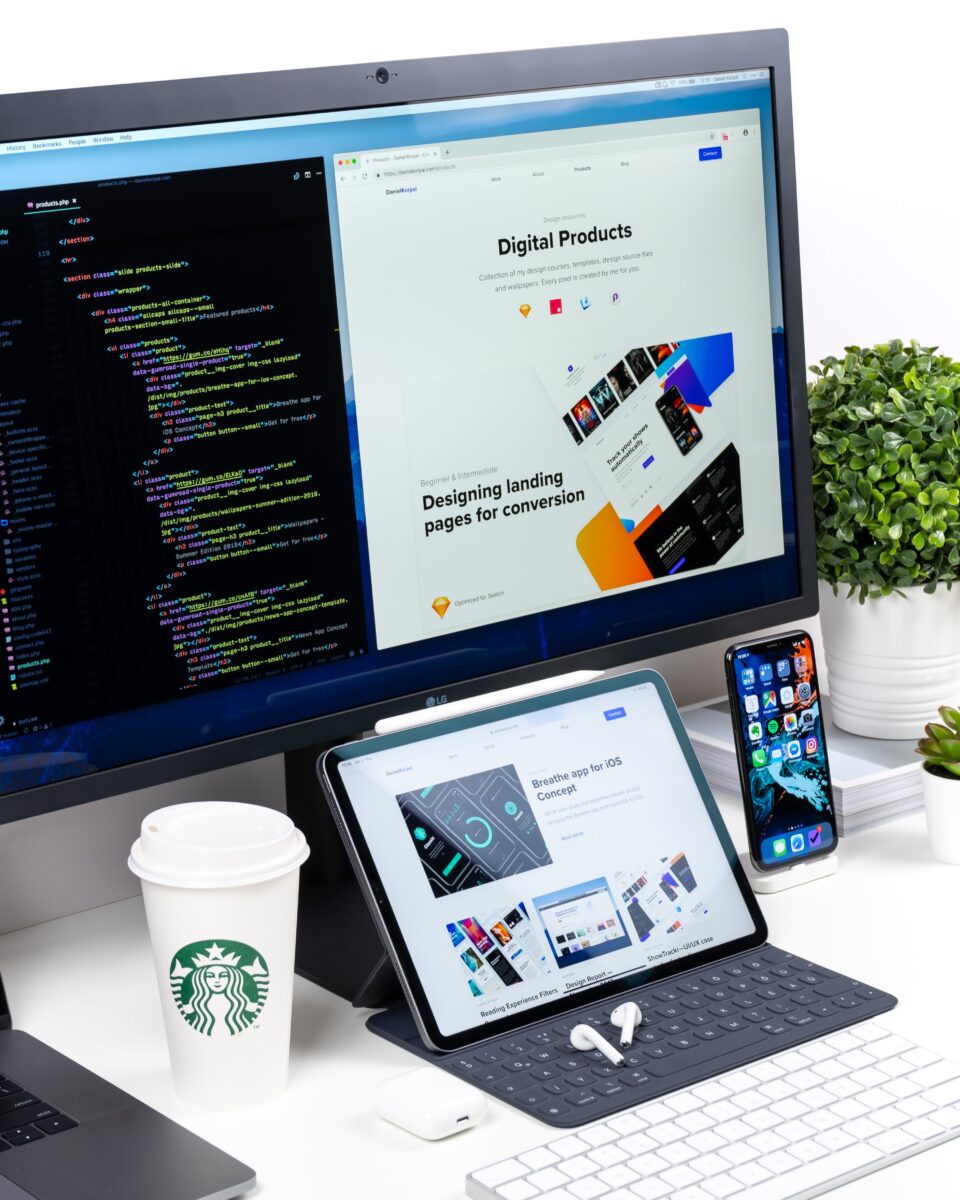Content
The rapid shift online in all areas of education makes the demand for eLearning solutions high as ever. Online learning platforms like Coursera, Udemy, and similar are getting momentum rapidly and bringing a variety of perks for students and teachers.
With such a massive demand for eLearning platform development, there is no wonder why many technology- and education-related businesses are looking for opportunities to implement their own product. If you are among them, you’ve come to the right place!
Read Also:
How To Create an LMS From Scratch? Ultimate Guide 2023
How to Create an E-Learning App: Steps, Price, Features
EdTech Application Development: Standards, Process, and Pitfalls in 2023 [on Real Cases]
Complete Guide to eLearning Platform Development: Overview
The size of the global eLearning market was $215 billion in 2021. In the next eight years (2022-2030), this industry is projected to reach $645 billion at a CAGR of 13%. The rapid growth and huge popularity of this sector make it clear that now is the best time to invest in smart eLearning solutions. Namely, in eLearning platforms.
According to numerous studies, eLearning platforms have plenty of benefits. In corporate training, for example, such platforms provide 60% better knowledge retention, 30% better productivity, and 18% higher engagement levels.
All in all, eLearning platforms provide students of all ages and levels with four core advantages:
- Ease of getting started;
- Flexibility;
- 24/7 availability;
- Affordability.
With all this in mind, we can confidently say that the development of eLearning platforms is a promising venture. You just need to know how to handle it right.


Types of eLearning Platforms in eLearning Platform Development
Before we delve into detail and tell you how to build an eLearning platform from scratch, you need to know that there are different types of such platforms.
Learning Management Systems
A learning management system (LMS) is an all-rounded solution designed to let educators plan, implement, and assess a learning process with ease. Simply put, such systems let instructors create and deliver educational content, and also track and assess students’ progress.
Typically, this type of platform consists of two main elements – a server with the base functionality and a user interface that can be utilized by administrators, educators, and students.
Read Also: How To Design an LMS Right? Practical Guide For Owner [Trends, Rate, Re-design, Tips in 2023]
We designed a responsive web app paying special attention to convenience while creating and managing assignments for students.
Student Management Systems
A student management system or student information system (SIS) is software designed to implement simple information tracking for parents, educators, and other faculty staff. Simply put, such systems are built to coordinate scheduling and communications between administrative staff and parents regarding students.
Also read – How to Develop a School Management System Software: Guide for Principals
Virtual Classrooms
A virtual classroom is basically a digital learning environment. It is a platform where students and educators can gather for a class and interact with each other, as well as with the relevant learning material.
Assessment Software
This type of eLearning platform is designed to help both teachers and students track progress, reflect on it, and create new learning plans tailored to every student’s needs. Such solutions are there to improve student experiences and make the learning process more effective.
Massive Open Online Courses
A massive open online course (MOOC) is a type of eLearning platform that delivers free web-based learning courses to everyone. Such platforms are there to give access to the needed knowledge and skills to large numbers of geographically dispersed students.
eLearning Platform Development Trends
If you want to build a platform that drives users and keeps them happy, you need to keep an eye on existing and emerging industry trends.
Read Also: How To Build MVP For LMS? (Step-by-step Guide for CEO and Team 2023)


Here are some of the biggest trends in this area for 2023:
Interactive Chatbots
Experts claim that over 70% of eLearning platforms in 2023 will leverage both live training and bots. Interactive chatbots can provide online learners with quick, around-the-clock support and unlock more opportunities for personalization. As a result, you get better learner experiences and reduced costs of support staff.
Content Personalization
Personalization is a recurring trend in the eLearning industry. Recognizing the unique paces and needs of every student, platform developers strive for more and more personalization every year to create the best user experiences and improve learning outcomes.
Gamification Elements
Gamification has long proven to be effective in terms of engaging users and keeping them returning, which is why it’s trending in software development in general. In the eLearning sector, in particular, this trend is also used to help learners progress better.
Read Also: How to Build a Gamification Platform in 2023? A Step-by-Step Guide
Microlearning
The term microlearning stands for breaking down educational courses and materials into bite-sized experiences. This trend helps deliver more personalized and meaningful learning experiences. At the same time, it has been proven that microlearning helps learners feel tangible results from learning faster.
Social Learning
The last major trend is social learning. In a nutshell, this concept is used for improving socialization among online students by letting them have direct (i.e. a video conference) and indirect (i.e. correspondence via email, social networks, etc.) social interactions with each other.
Share Your Vision
4 Main Types of eLearning Compatibility Standards in eLearning Platform Development
In a nutshell, compatibility standards are used to address the relationship between the LMS and the courseware. These standards are inherent in every eLearning platform. So in order to figure out how to build an eLearning platform, you need to get clear on the main compatibility standards used in eLearning.


4 Main Types of eLearning Compatibility Standards in eLearning Platform Development
Below are the top 4 options that are there:
Installation and Launch
The first type of compatibility standard stands for the relationship between the courseware and the learner. Not so long ago, it was rarely possible to install and launch eLearning courses on a computer system or a network. However, now that most courses are hosted on an LMS, implementing this compatibility standard is easy. When this standard is applied, a learner typically receives detailed system requirements (e.g. resolution, browser, Flash Player version, etc.) needed to install and launch a course. If all requirements are met, a learner can install and initially launch the course to start it.
SCORM Compliance
Another top compatibility standard is SCORM compliance. SCORM stands for Sharable Content Object Reference Model.
This standard allows ensuring the portability and interoperability of a course. Simply put, it lets a course communicate with any other SCORM-based LMS or course and be easily ported to any SCORM-based LMS. This standard tracks all parts of the course, including learners’ progress, completion status, assessments, points, time spent on the screen, and much more. In a nutshell, SCORM-compliant courses give you access to a wealth of valuable data.
AICC Compliance
The next standard, AICC, stands for Aviation Industry Computer-Based Training Committee. It is a technical standard that defines how LMSs and eLearning courses interact in order to streamline tracking. This standard is quite similar to the previous one, meaning it also allows you to track and access a variety of important tech data. It has a few minor differences and might not be as widely used as SCORM. However, since there still are some LMS systems that follow AICC, it’s crucial to keep eLearning courses and platforms compatible with this standard.
Tin Can API
The last top compatibility standard is the successor of SCORM. In a nutshell, Tin Can API gives you the possibility to record and track learning experiences from anywhere. The biggest difference between this standard and SCORM is that the latter only allows tracking experiences that happen on desktops and laptops.
Tin Can API, on the contrary, allows tracking experiences on any device. Therefore, when it comes to mobile eLearning, Tin Can API is a must. Also, it lets track a wider range of learning activities, including experiential learning, gamified learning, simulations, and much more. Thus, experts believe that this compatibility standard will be predominant in the future.
Read Also: How to Start an Online School: Complete 2023 Guide
Top Features for eLearning Platform Development
To create an eLearning platform that will survive and overdo the competition, you need to know what features must be there. In this part of our guide, we will look at the top must-have basic and advanced features that must be inherent in every high-quality eLearning platform.
MVP Features in eLearning Platform Development
The minimum viable product (MVP) of an eLearning platform should always feature the following:
User profile
A user profile feature enables every learner to sign up for an eLearning platform and have personalized dashboards that give them access to crucial features like progress tracking, messaging, etc. Besides, user profiles help add more security and every learner’s dashboard will be protected by an individual username and password.
Dashboard
A dashboard is needed in an eLearning platform to provide learners with a personalized overview of all core data related to their courses and profile. Typically, a dashboard will include such data as a learning plan, schedule, classes, materials, progress, and settings. It is there to help users navigate the platform in a simple and intuitive way.
Course-page
Every eLearning platform should also have a course-page feature. It is there to help users access the general description of every course, as well as additional details, such as complexity level, lecturer, duration, etc.
Course-building page
To build an eLearning platform that enables users to create their own content, you need to feature a course-building page. In a nutshell, it is a page where users can design their own courses with ease.
Notifications
In eLearning platforms, the notifications feature is needed to help learners and educators to stay on the right track with their courses. Notifications can be delivered when there are new tasks or materials added to the course, to notify about upcoming classes or deadlines, and for many other updates and alerts too.


Filtering
This feature is especially crucial for a seamless search for the right courses. With the help of filters, every learner should be able to discover courses based on their personal needs, interests, and preferences.
Comments
In eLearning platforms, comments are typically featured for every course and lecturer. This feature is necessary to help users learn more about other students’ experiences before picking a suitable course.
Payments
The next feature is a must-have for commercial eLearning platforms. If you plan to charge money for the courses, subscriptions, and other features available on your platform, you need to provide users with convenient and secure payment options.
Admin panel
An admin panel is a must to provide your eLearning platform administrators with all the tools they need to manage the platform, organize courses, view teachers’ and students’ data, analyze statistics, and perform other administrative tasks.
File uploading
During online courses, instructors need to share the needed course materials and students need to deliver completed assignments. To make this real, every eLearning platform should have a convenient file uploading feature.
Advanced Custom Features in eLearning Platform Development
The features stated above are must-haves for creating a functioning MVP of an eLearning platform. But, if you want to know how to build an eLearning platform that stands out from the crowd, you need to enhance it with the following advanced features:
3rd party integration
Allowing third-party integration of external handy tools and apps can significantly expand the functionality of your platform and create better user experiences. Basically, this feature allows users to support their learning with handy tools, such as calendars, cloud services, etc.
Gamification
As was mentioned earlier, gamification is among the biggest trends in eLearning. By integrating different gamified elements into your platform, you can boost users’ engagement and help them achieve better results. At the same time, you will keep them returning to your platform.
Communication channels
Seamless communication between instructors and students is the key to successful online learning. Thus, you need to offer several convenient communication channels on your platform to pave the way for seamless communication.


Quizzes
Quizzes can be used as a classroom or homework activity. They allow self-assessment and also help teachers monitor their students’ knowledge. Thus, integrating this feature into an eLearning platform is never a bad idea.
Analytics and reporting
These two features will enable both teachers and learners themselves to keep track of the progress and achievements throughout the course. They will help improve learning experiences and outcomes.
Certifications
Although not all online courses have to provide certificates, it’s great to have this feature on your platform to let learners get certified after completing their courses. This will help to keep their motivation high and also add credibility to your platform.
White-labeling
In a nutshell, white-labeling your eLearning platform means making it look and feel like your company. It can mean replacing vendor colors, logos, and other design elements to make it look more branded. This is important for building brand awareness.
Mobile capability
These days, people love doing everything on the go, even learning. By making your eLearning platform mobile-friendly you give users the possibility to study from anywhere and at any time This will significantly boost the flexibility and comfort of your platform for every learner.
Read Also: How to Create an Online Tutoring Website: From Idea To Launch
Technologies That Can Help You in eLearning Platform Development
When discovering how to build an eLearning platform, it’s especially important to identify the right technologies for building your platform. Apart from the basic tech stack that we will discuss later, there is a number of solutions, implementing which will help streamline the development process and ensure success.
Namely, there are three advanced technologies to consider if you want to build an eLearning platform of top-quality:
Artificial Intelligence (AI)
Artificial intelligence is reshaping the field of eLearning. AI-powered platforms have the ability to perform a variety of tasks that typically require human intelligence. Namely, they can provide solutions for multi-language translations, speech recognition, decision-making, and more.
Apart from creating more meaningful experiences for users in the future, this technology can also help the development process. Namely, integrating AI during the development stage can let you automate a variety of time-consuming tasks. For example, this technology can help you make better strategic decisions, identify and fix errors easier, enhance data security, etc.
Augmented Reality (AR)
In eLearning platforms, AR can create more exciting and simple learning experiences. With its help, learners can study pretty much any subject or topic “from the inside,” in a half-virtual environment.


In the development process, this technology also has a variety of perks. Namely, it can help shorten development time, reduce costs, improve collaboration, and do much more. Moreover, augmented reality enables product development teams to create visualizations of a project for other teams, partners, and clients.
Virtual Reality (VR)
Virtual reality is another technology of the future in eLearning. Implemented in eLearning platforms, VR can help students learn in a much deeper and more exciting way. This technology can let learners experience any events or activities in a safe virtual environment. So, it’s also known for improving students’ engagement and motivation.
For development, this technology also offers groundbreaking opportunities. VR can help developers literally see and feel the product they are working on. Namely, some VR tools available today even enable you to create and manipulate code by hand in a virtual environment.
Read Also: How to Develop a School Management System Software: Guide for Principals
eLearning Platform Development and Monetization Strategies
After you learn how to build an eLearning platform and implement your project, chances are that you will want to start making money from it.
The good news is that there are plenty of monetization options to try. Below are some of the top ones.
Subscriptions
A paid subscription-based access to a platform is one of the most obvious ways to start making a profit from your product. This strategy basically implies providing users either limited or unlimited access to the training materials based on a payment.
Marketplace
Another way to monetize an eLearning platform is to make it a sort of marketplace. The idea is simple – you provide content creators and educators a solid web space to run their courses and they pay you for the possibility to locate their courses on your platform.


lucas law ecELcxmJTk4 unsplash
Freemium Method
This monetization model basically stands for the “free” and “premium” at the same time. It implies providing users with access to the basic features and resources on your platform at no cost and then offering them to pay for premium access to an expanded list of features/content.
Online Advertisements
Finally, if you don’t want to incorporate paid placements, subscriptions, or features, you can always use the time-tested monetization technique and place paid ads on your website. This way you will make a profit not from your users but from partners who want to be featured on your platform.
Successful eLearning Platform Development in 5 Easy Steps
So, you already know about the key details and specs associated with the development of an eLearning platform. What’s next?


Successful eLearning Platform Development in 5 Easy Steps
In this part of our guide, we will tell you how to build an eLearning platform step by step!
Step 1: Validate Your Idea, Define Your Niche, and Choose a Type of eLearning Platform
Whether you’re implementing an eLearning platform or any other project, it always starts with lots of research and planning. So, before you can move to any further steps, you have to clearly define your idea and goals.
First of all, validate your idea. Take enough time to research and assess the market and competition, and study the needs of your target users. Doing this will help you see how viable your idea is. Based on this research, you should define the right niche for your future project. The selected niche market should promise the demand for your product. After you define it, select a specific type of eLearning platform that would be of interest to your target market.
Step 2: Find a Good Contractor, Draw Up a Cooperation Plan, and Determine the Main Requirements
Once you know the general info related to your project, you need to find a reliable development partner who will help you bring your ideas to life. Look for a contractor that has vast expertise in the eLearning sector. Also, carefully assess the talent, processes, technology, and experience a chosen contractor possesses to ensure that it aligns with your needs.
Once you pick the best development vendor, take some time for negotiation. You need to draw up a clear set of requirements for your project and a well-defined cooperation plan. This is needed to ensure seamless and productive collaboration.
Step 3: Build Design System, Platform Architecture, Wireframes, and Prototypes
After you agree on the general requirements and terms, the hired contractor should be able to get to work on your project. The first stage in the development process will span everything related to the design, architecture, and wireframes of your products.
At this stage, the hired vendor will develop one or a few prototypes of your future eLearning platform and approve them with you. From this stage on, the most crucial part of cooperation is building a good rapport with the hired contractor in order to ensure that the team understands your vision and needs thoroughly.
Step 4: Choose Technical Stack, Start MVP Development, and Coding
After you approve the design and prototype of the platform, your contractor can start working on the technical part. Prior to this, the vendor will need to identify a suitable tech stack. It should align with your goals, target audience, selected platform type, and budget.
When the tech stack is defined, your dedicated developers will create a minimum viable project, approve it with you, and get to coding.
Step 5: Conduct Testing, Identify Bugs and Fix All Errors
Finally, the last stage in the development process involves thorough testing and quality assurance. At this stage, your contractor will test the design and functionality of the platform, identify bugs, and fix them. The goal of this process is to ensure the ultimate usability and quality of the product.
Start eLearning Platform Development With RewiSoft [Our Tips and Recommendations]
RewiSoft is a top-ranked software development partner who knows how to bring any project to life. Thanks to our dedication and vast expertise, we have successfully implemented dozens of great products, including some in the eLearning sector.
Based on our previous experience in creating competitive eLearning platforms, here are a few quick tips that should help you succeed:
- Run in-depth interviews with the target audience to understand their needs better;
- Define detailed user personas to walk through their journeys in the development process and come up with meaningful solutions;
- Map out user flow to have a better idea of the platform’s functionality;
- Use the Agile model to develop and implement features gradually, meanwhile ensuring the best outcomes;
- Create smart and user-friendly UX solutions with human-centered essence.
Need more help? If this all sounds too complicated to you and you just wish someone could handle all the work for you, our team is always ready to help! Contact us ASAP to get a dedicated team of experts to work on your project and ensure its success!
Read Also: Complete Guide to eLearning Platform Development [Price, Steps, and Requirements]
What Challenges Can You Face During eLearning Platform Development?
Knowing how to build an eLearning platform step by step, you should also be aware of some of the biggest challenges that might be there.
Wrong Technical Stack
These days, technology trends and demands are changing rapidly. If you fail to match the tech stack for your project to the current market needs and trends, as well as to your project requirements, you won’t succeed.
Poor User Experience
User experience is now the top priority in software development. Create a great platform but with poor UX and your target audience won’t stay with you.


Too Much Functionality for an MVP
Stuffing too many features into your MVP can significantly increase the resources and time you need to build it. Besides, it can make you lose your focus and overlook something important.
Poor Business Analysis
Failing to analyze and assess your business, target market, and audience can have a destructive effect on your project. After all, it’s impossible to predict your product’s viability and success without thorough analysis.
How Much Does eLearning Platform Development Cost
The cost of development varies significantly depending on the type and scale of the platform, chosen contractor and their location, features, the time needed to implement the project, and many other factors.
To give you a general idea, an eLearning platform similar to Udemy can cost you from $30,000.
Conclusion
eLearning platforms are incredibly popular these days. Thus, creating one yourself can be a great way to take your business to the next level and drive profit. The only problem is that developing a good eLearning platform isn’t that easy.
The development process is full of hidden pitfalls and challenges. From conducting business analysis to the testing stage – there is plenty of space for mistakes that can cost you time and money. But not anymore.
After reading this guide, you know everything about the development of an eLearning platform. Use this guide as your roadmap to success!







